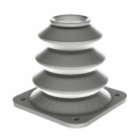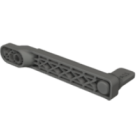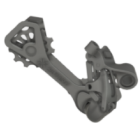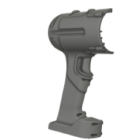PolyJet printing
PolyJet printing is one of the most advanced additive manufacturing technologies available today, designed specifically for applications that demand ultra-fine resolution, smooth surface finishes, and multi-material capabilities. Developed by Stratasys, PolyJet is often considered the 3D printing equivalent of a high-end inkjet printer — but instead of spraying ink onto paper, it jets liquid photopolymer materials onto a build platform and cures them with UV light.
This process excels where aesthetics, accuracy, and visual realism matter more than mechanical performance, making it an ideal tool for design verification, medical modeling, and consumer product development.
What is PolyJet 3D printing?
PolyJet is a material jetting technology that works by precisely depositing microscopic droplets of liquid photopolymer through multiple nozzles onto a build tray. Each droplet is cured instantly by ultraviolet (UV) light, allowing the object to solidify layer by layer with extremely high resolution — often down to 16 microns per layer.
Where PolyJet sets itself apart is its multi-material and multi-color printing capability. The print head can blend several materials and colors in a single pass, enabling textures like rubber, rigid plastic, and translucent surfaces — even in a single print.
The PolyJet printing process
The process follows a consistent, finely controlled sequence:
- Material jetting: several print heads deposit ultra-thin layers of photopolymer onto the build tray.
- Immediate curing: a UV light source mounted on the print head cures each droplet as it lands.
- Support structures: a separate gel-like support material is jetted where needed to support overhangs and complex geometries.
- Post-processing: after printing, the part is removed and the support material is washed away — typically with a water jet or soluble bath.
This highly refined process produces parts that are ready for handling with minimal finishing, often requiring no sanding or smoothing at all.
Material capabilities and performance
PolyJet materials are primarily photopolymers, offering a wide range of visual and tactile properties:
- rigid opaque materials — for simulating ABS or polypropylene
- rubber-like elastomers — for testing flexible or overmolded components
- transparent resins — useful for lenses or fluid flow visualization
- medical-grade materials — suitable for dental or anatomical models
- color materials — enabling full-CMYK color prints
That said, the mechanical strength and heat resistance of PolyJet parts are generally lower than those produced via SLS, MJF, or FDM. PolyJet excels in design validation rather than functional load-bearing parts.
Key applications
Thanks to its combination of accuracy, smooth surface finish, and aesthetic flexibility, PolyJet is widely used in:
- product design and prototyping,
- medical modeling (especially dental and surgical planning),
- education and research visualization,
- packaging mockups,
- color and texture testing in consumer goods,
- microfluidics and fine-detail engineering concepts.
These applications often require presenting a concept in a near-final form before tooling or mass production begins.
Cost considerations
PolyJet printing is relatively expensive, both in terms of machine investment and material cost. Materials are supplied in sealed cartridges and priced higher than typical thermoplastics, especially when using color or flexible options. Additionally, waste from purging or unused support material contributes to operating cost. However, for use cases where visual validation saves time and tooling expense, the return on investment can be substantial.
PolyJet vs other technologies
When compared to FDM, SLA, or SLS, PolyJet fills a very specific niche.
- Better than FDM/SLA for surface smoothness and multi-material printing.
- Worse than SLS/MJF for mechanical strength or functional testing.
- More versatile than SLA when it comes to tactile and visual realism.
- More costly per part, but with unmatched visual detail.
In short, it’s not a one-size-fits-all technology — but in the right context, it delivers unmatched results.
Summary
PolyJet printing is a powerful additive manufacturing method that enables realistic prototypes, medical models, and presentation-ready parts with a level of polish unmatched by most other technologies. While it’s not ideal for functional applications requiring strength or heat resistance, its ability to print multiple materials, colors, and textures in one part makes it indispensable in industries focused on design, visual validation, and product development. When accuracy and aesthetics are the highest priority, PolyJet sets the standard.
Explore also
- Overview of 3D printing tech
- What is SLS printing?
- What is FDM 3D printing?
- What is SLA 3D printing?
- MJF 3D printing
- DLP 3D printing
- What is DMLS and SLM 3D printing?
- Binder Jetting
- Material Jetting
- New 3D printing technology
- 3D print vs injection molding
Related categories













